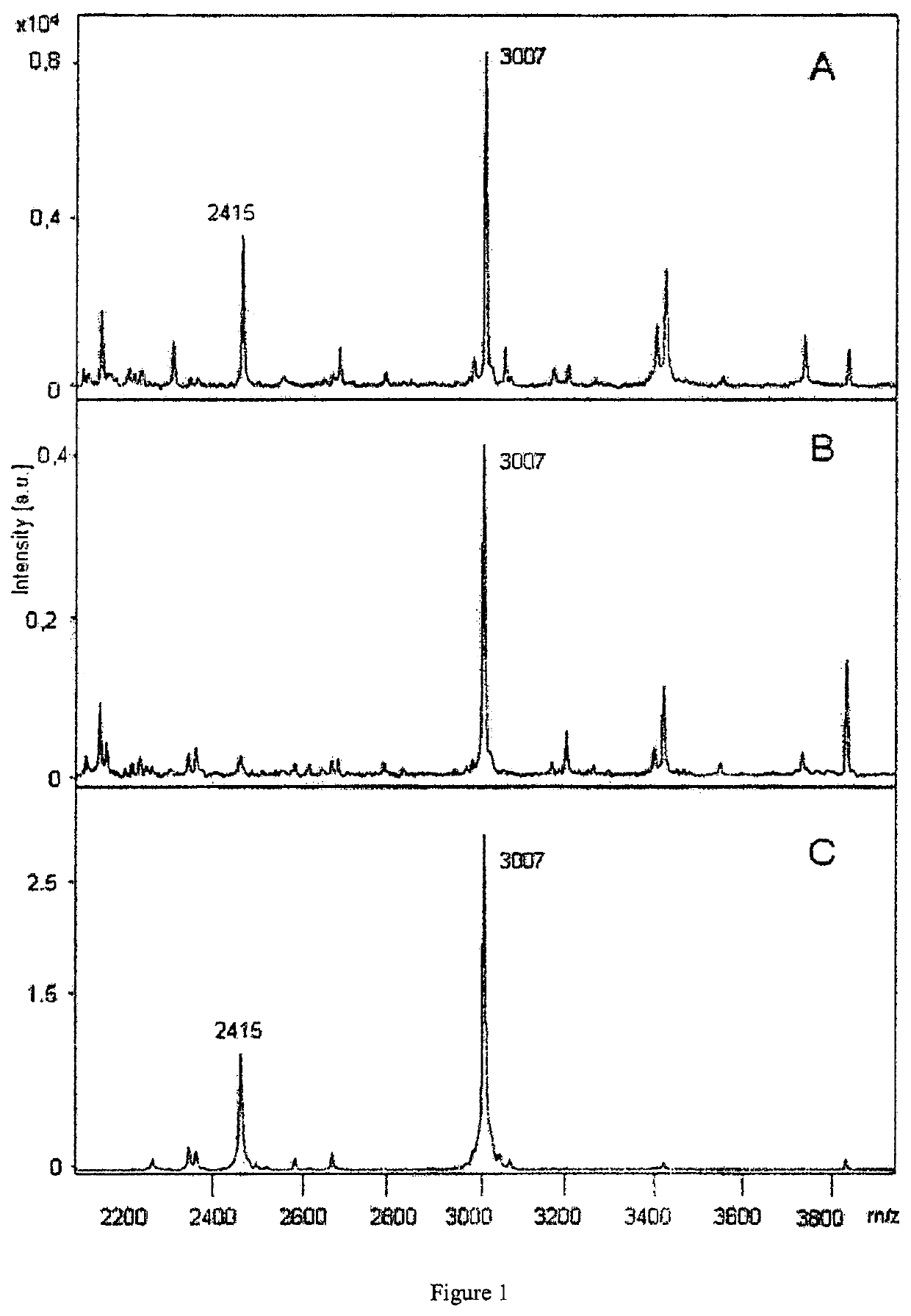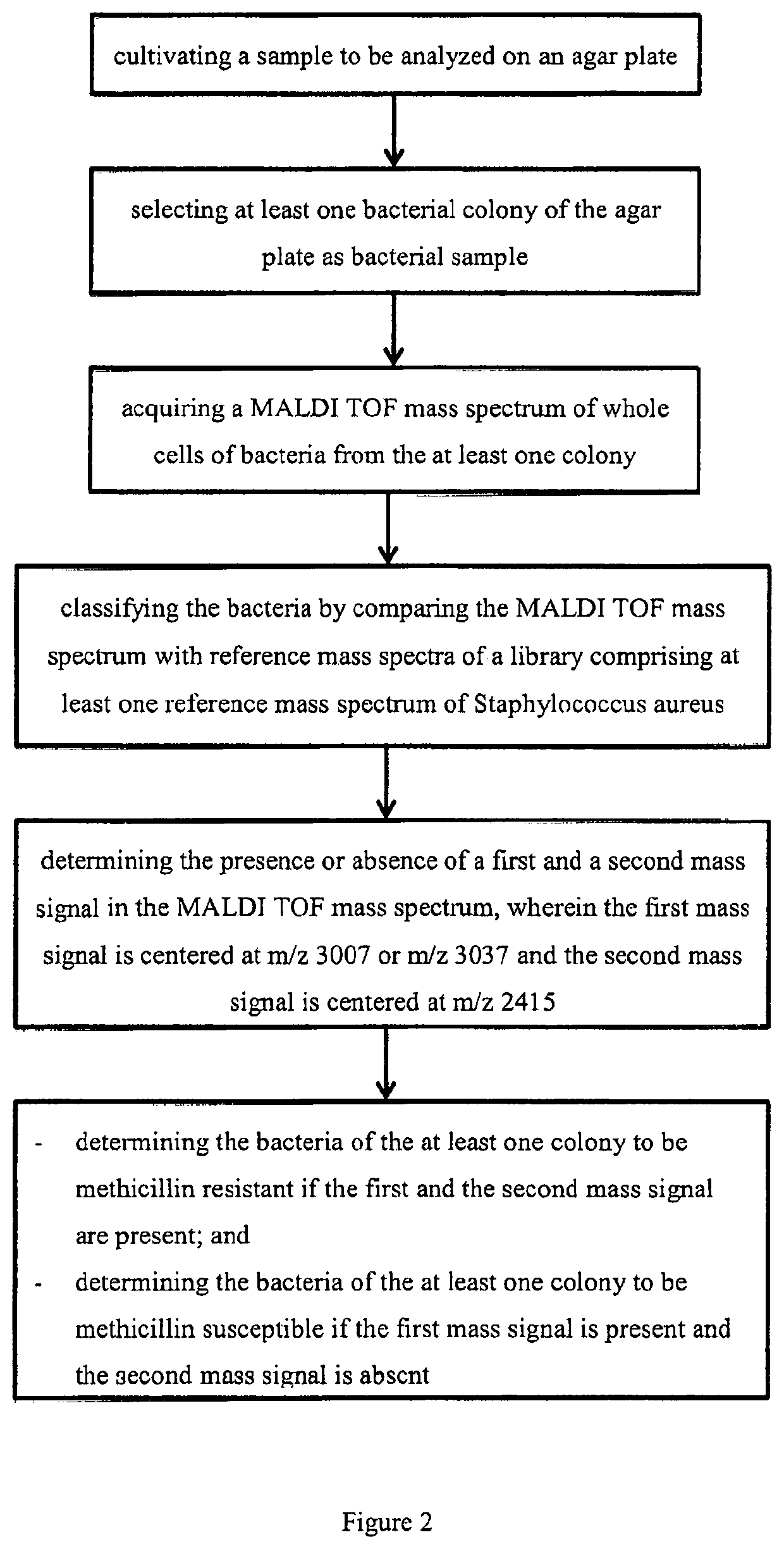Identification of methicillin resistant Staphylococcus aureus (MRSA)
a technology of staphylococcus aureus and methicillin resistance, which is applied in the field of mass spectrometry, can solve the problems of skin infections, respiratory diseases, food poisoning, etc., and achieve the effect of strengthening the resistan
- Summary
- Abstract
- Description
- Claims
- Application Information
AI Technical Summary
Problems solved by technology
Method used
Image
Examples
Embodiment Construction
Mass Spectrometric Classification of Bacteria
[0022]The taxonomic classification of bacteria by mass spectrometry commonly starts with a cultivation of clearly separated colonies (isolates) on a gelatinous culture medium in a Petri-dish. With a small swab, e.g. a wooden toothpick, a tiny amount of bacteria from the colony is spotted onto a mass spectrometric sample plate. The cells are lysed in a well-known way, a solution of matrix material is added and dried, and the sample plate is inserted into the ion source of a time-of-flight mass spectrometer (TOF) operated with ionization by matrix-assisted laser desorption (MALDI). Ions are generated by pulsed laser shots, and their flight time is measured. Usually hundreds of single spectra are added together to improve the signal-to noise ratio. The terms “mass spectrum of a bacteria” or “sample mass spectrum” acquired by a MALDI TOF mass spectrometer usually refers to the sum spectrum, added together from many single mass spectra.
[0023]T...
PUM
| Property | Measurement | Unit |
|---|---|---|
| MALDI time of flight | aaaaa | aaaaa |
| spectrum | aaaaa | aaaaa |
| mass spectra | aaaaa | aaaaa |
Abstract
Description
Claims
Application Information
 Login to view more
Login to view more - R&D Engineer
- R&D Manager
- IP Professional
- Industry Leading Data Capabilities
- Powerful AI technology
- Patent DNA Extraction
Browse by: Latest US Patents, China's latest patents, Technical Efficacy Thesaurus, Application Domain, Technology Topic.
© 2024 PatSnap. All rights reserved.Legal|Privacy policy|Modern Slavery Act Transparency Statement|Sitemap


